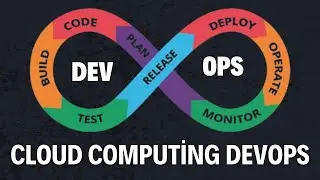Development & Operations (DevOps)
A new approach where we have the Development and the Operations team work collaboratively so that when a new application is deployed into Production, the process is pretty smooth - this is called DevOps (i.e. Development + Operations).
DevOps (Development and Operations) is a set of practices, principles, and tools that aim to automate and integrate the processes between software development and IT operations teams. The goal of DevOps is to shorten the development lifecycle, improve collaboration between teams, and continuously deliver high-quality software.
Key Concepts of DevOps:
Collaboration and Communication: DevOps promotes a culture of shared responsibility and close communication between development (Dev) and operations (Ops) teams. This reduces bottlenecks and improves coordination.
Automation: DevOps emphasizes automating repetitive and manual tasks, such as testing, building, and deploying software, to reduce errors and increase efficiency.
Continuous Integration (CI): Developers frequently integrate code into a shared repository. Automated builds and tests are run to detect any issues early.
Continuous Delivery (CD): Software is automatically deployed to production or other environments after passing all necessary tests, enabling rapid, reliable releases.
Infrastructure as Code (IaC): DevOps uses code to manage and provision IT infrastructure, making systems easier to configure, scale, and maintain consistently.
Monitoring and Logging: Continuous monitoring of application performance and infrastructure is critical. Logging enables teams to identify issues and address them before they impact users.
Common Tools in DevOps:
Version Control: Git, GitLab, Bitbucket
CI/CD Pipelines: Jenkins, CircleCI, GitLab CI, Travis CI
Containerization: Docker, Kubernetes
Configuration Management: Ansible, Puppet, Chef
Monitoring and Logging: Prometheus, Grafana, ELK Stack (Elasticsearch, Logstash, Kibana)
Cloud Platforms: AWS, Azure, Google Cloud
Benefits of DevOps:
Faster software delivery.
Improved collaboration and efficiency.
Better scalability and stability.
Higher quality and more reliable applications.





![CALLIGRAPHY ON IPAD TABLET [Arabic script on an abstract background]](https://images.videosashka.com/watch/Uu6CVlzLGhA)

























